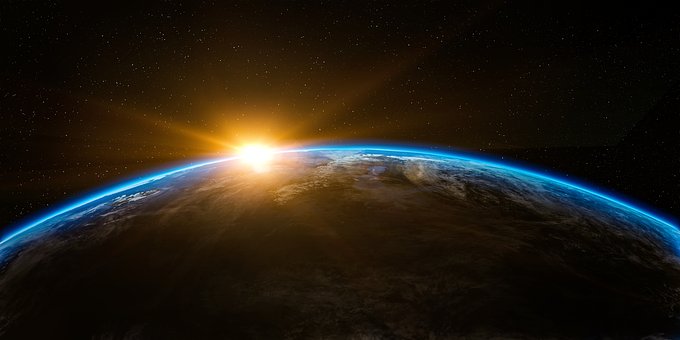LESSON 8
Some people think of our ideas as superstition and believe that we are just plain wrong.
A myth is a truth expressed in a symbolic or poetic way. Mythology is not meant to be literally true; it is a way of expressing and teaching important ideas.
One scientific model of reality owes much to the older. This is the Gaia Hypothesis.
So what is the hypothesis of Gaia? She was the sum, the unity of all the Earth energies and processes.
She has always been loved by mankind as the giver of all bounty and rituals have been preformed in her honour throughout history to ensure good harvests and good hunting.
That being, called Gaia, is this planet, The Earth.
All the life forms of the planet are part of Gaia
According to this view, the very makeup of the atmosphere, seas, and terrestrial crust is the result of radical interventions carried out by Gaia through the evolving diversity of living creatures.
The atmosphere would give it away. The earth’s atmosphere at present is 79% nitrogen, 21% oxygen with traces of carbon dioxide, methane and argon.
bacteria and photosynthetic algae began some 2.8 billions of years ago extracting the carbon dioxide and releasing oxygen into the atmosphere, setting the stage for larger and more energetic creatures powered by combustion, including, ultimately, human beings.
In the 1960’s, during the space race which followed the launching of Sputnik, he was asked by the Jet Propulsion Laboratory and N.A.S.A to help design experiments to detect life on Mars.
Lovelock had predicted the atmosphere of Earth is in a “far from equilibrium” state- meaning that there was some other complex process going on which maintained such an unlikely balance.
But a sure giveaway would be a complete atmospheric analysis, which the Viking Lander was not equipped to do.
Viking found nothing on Mars, but Lovelock had seen the Earth from the perspective of an ET looking for evidence of life. By the nature of its activity it seemed to qualify as a living being.
“The name of the living planet, Gaia, is not a synonym for the biosphere-that part of the Earth where living things are seen normally to exist. The biota and the biosphere taken together form a part but not all of Gaia. Just as the shell is part of the snail, so the rocks, the air, and the oceans are part of Gaia. And she will exist into the future, as long as life persists.
The Gaia Hypothesis says that the temperature, oxidation, state, acidity, and certain aspects of the rocks and waters are kept constant, and that this homeostasis is maintained by active feedback processes operated automatically and unconsciously by the biota.”
“You may find it hard to swallow the notion that anything as large and apparently inanimate as the Earth is alive. The difficulty can be lessened if you let the image of a giant redwood tree enter your mind. The great tree is an ancient spire of dead wood, made of lignin and cellulose by the ancestors of the thin layer of living cells which constitute its bark. ”
The root question of Gaia’s critics and a central point in his theory concerns the difference between a planetary environment which might only be the aggregate result of myriad independent life forms coevolving and sharing the same host, and one which is ultimately created by life forms deployed, so to speak, to accomplish the purpose of the larger being.
our white blood cells thrive and reproduce, going about their business, they are indisputably serving the life of the larger body which we use Of course, whatever consciousness they experience in their realm is certainly far from that which we, the larger being, the whole, experience.
Recent scientific work, such as in the field of complex systems, have begun to give us the impression that this opposition of terms, the larger caused by its constituents, may be one of those oppositions which are the constructs of our own minds, and must be dropped if we are to understand the truth, which is neither the one nor the other, but more difficult to comprehend and more fascinating to behold. Perhaps that is a property of life.
Anthropocentrisms to the last, we might assume that the production of the human species is a great step upward for Gaia, a sort of rapidly evolving brain tissue. Other analogies come to mind: are we part of her arsenal of interplanetary spores?
What stage would Gaia be in now? Is Gaia herself somehow part of a larger living being, perhaps on a galactic scale? Will we eventually be able to experience something of the awareness which Gaia has?
Rather, the danger is to the human race, not only from our own actions, but also by Gaia’s reaction to them.
Lovelock first exposed his idea in his 1979 book, “Gaia, a New Look at Life on Earth”. It also provoked a lot of research, and the resulting body of information has encouraged Lovelock to publish this second book, a more confident and complete exposition of the Gaia hypothesis.
Those of us, who consider ourselves to be somehow involved in the birthing of a new age, should discover Gaia as well. It is an idea which deeply startles us, and in the process, may help us as a species to make the necessary jump to planetary awareness.
It is useful, only so long as we, like the Ancient Greeks, don’t take it too literally.

